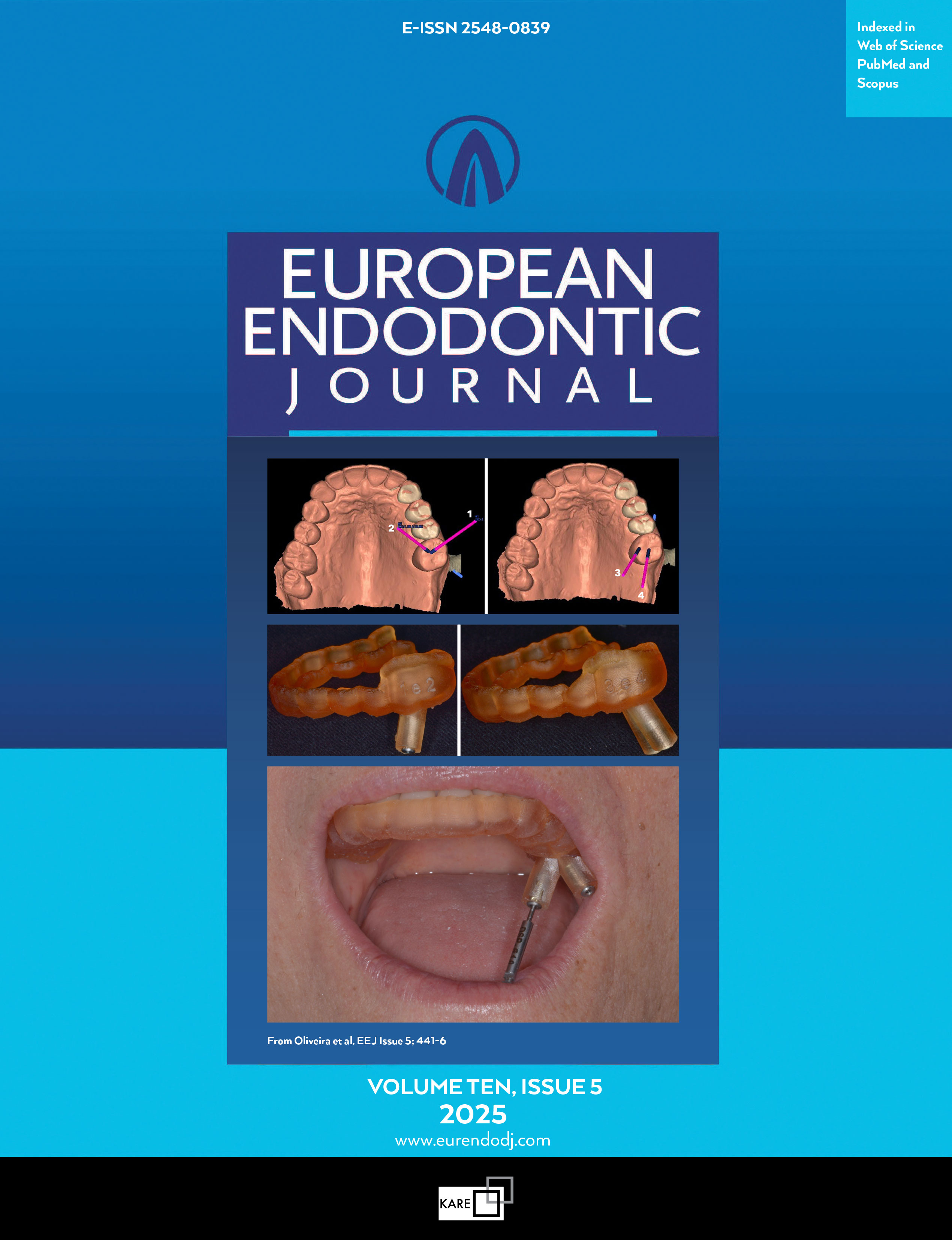Metrics
2024 IMPACT FACTOR
5 year Impact Factor
Eigenfactor Score
2024 CiteScore
Journal Citation Reports
(Clarivate 2025, JIF Rank)
Accuracy of Digital Radiography and Cone-Beam Computed Tomography in Assessing Filling Material Extrusion Using Micro-Computed Tomography as Gold Standard: A Study in Human Cadavers
Thamyres Monteiro1, Maria KalineRomeiro Teodoro2, Karen Brisson3, Karim Aazzouzi1, Marília Marceliano-alves4, Andrea Campello5, Flávio Alves61Department of Dentistry, University of Grande Rio (UNIGRANRIO), Rio de Janeiro, RJ, Brazil2Department of Restorative Dentistry, UNIFACOL University Center, Vitória de Santo Antão, PE, Brazil
3Laboratory of Molecular Microbial Ecology, Paulo de Góes Institute of Microbiology, Center for Health Sciences, Federal University of Rio de Janeiro (UFRJ), RJ, Brazil
4Department of Dentistry, Faculty of Dentistry, Iguaçu University (UNIG), Nova Iguaçu, RJ, Brazil; Department of Endodontics, Maurício de Nassau University Centre (UNINASSAU), Rio de Janeiro, Brazil; Department of Dental Research Cell, Dr. D. Y. Patil Dental College and Hospital, Dr. D. Y. Patil Vidyapeeth, Pune, India
5Department of Dentistry, Faculty of Dentistry, Iguaçu University (UNIG), Nova Iguaçu, RJ, Brazil.
6Department of Dentistry, University of Grande Rio (UNIGRANRIO), Rio de Janeiro, RJ, Brazil; Department of Dentistry, Faculty of Dentistry, Iguaçu University (UNIG), Nova Iguaçu, RJ, Brazil
This study compared the accuracy of digital periapical radiography (DPR), and cone-beam computed tomography (CBCT) in detecting extruded filling material, using a human cadaver model. Micro-computed tomography (Micro-CT) served as the gold standard. A total of 27 single-rooted teeth embedded in cadaveric mandibular segments, obtained from a prior retreatment study, were included: 25 with confirmed apical extrusion of filling material on micro-CT and 2 without extrusion serving as negative controls. The segments were imaged using both DPR and CBCT. Two calibrated endodontists independently assessed the images for visible extrusion; discrepancies were resolved by a third evaluator. Although DPR demonstrated lower overall sensitivity than CBCT, both modalities showed identical specificity (100%). Diagnostic accuracy was 70% for DPR and 74% for CBCT, without statistically significant difference between them (p>0.05). Moreover, the volume of extruded filling material was not a significant predictor of detection accuracy for either DPR (p > 0.05) or CBCT (p>0.05). In conclusion, both DPR and CBCT demonstrated low accuracy in detecting filling material extrusion, with no significant difference between them. The occurrence of false-negative results may compromise the reliable assessment of extruded filling materials. In cases of true extrusion, approximately one-third would go undetected by both methods. (EEJ-2025-06-090)
Keywords: Cone-beam computed tomography, digital periapical radiography, microtomography, apical extrusion, image diagnosis, endodontic retreatment.Manuscript Language: English


